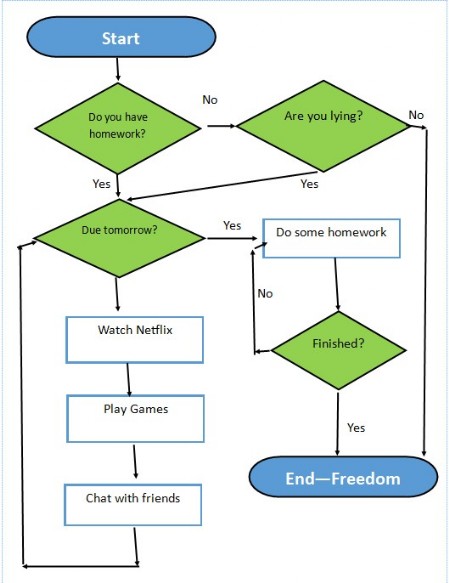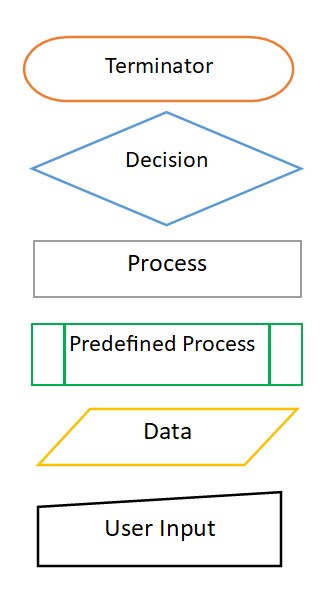Flowcharts


Flowcharts are used to visually show a algorithm - the step by step instructions and decisions needed to solve a task. They are a very good way of finding flaws in the logical thought process as you can't draw the connections - they are also useful to show where an algorithm needs to loop.
Flowcharts have different shaped "boxes" to represent different ideas:
- Terminator - used to show the start and end of a flow chart
- Decision - used to show any decisions. Use with questions and to represent if statements. There is always at least 2 possible outcomes (arrows) from a decision box
- Process - use to show a specific action needs to be done - a process
- Predefined Process - in progamming used to show a sub program
- Data (also called Input / Output) - used to show we are getting data of some kind, or we are generating an output (sending an email)
- User input - this is used to show that the user has to type or enter information at this point
These are the key shapes for secondary school level - there are a number of other shapes too - this site runs throughs them.
You can use specialist flowchart software (lots of free online ones) if you regularly make flowcharts. If you only make the occasional one you can find the shapes in Word, Powerpoint and Publisher - go to Insert > Shapes and you will see flowchart down towards then end of the list.
